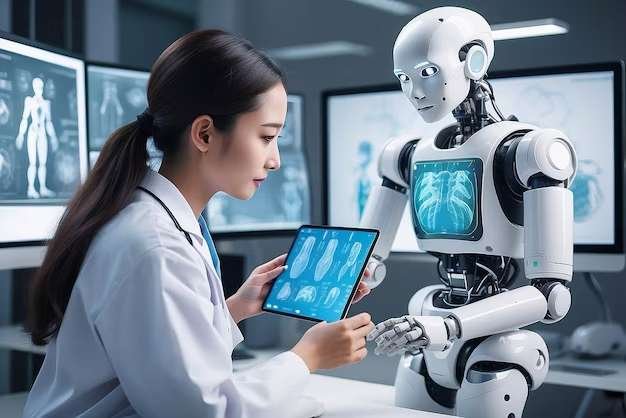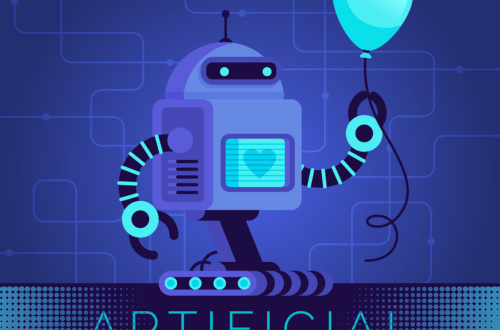In 2024, artificial intelligence (AI) will have advanced to previously unheard-of levels; the bot’s strength is evidence of this technology’s revolutionary potential. Artificial intelligence, which was formerly limited to science fiction, is now pervasive in everyday life and has a significant impact on how we work, communicate, and use technology. The bot, a dynamic organism that blurs the lines between humans and machines and opens up new possibilities for productivity, efficiency, and creativity, is at the center of this AI revolution.
Imagine a world in which intelligent algorithms perform jobs formerly performed by humans with ease, where customer service is efficient and personalized, and where conversational interfaces allow complicated systems to be easily traversed. This is what artificial intelligence (AI)-driven bots claim to deliver: intelligent digital assistants that can comprehend, analyze, and react to human demands and inquiries. We set out on a mission to solve the puzzles surrounding machine intelligence, investigate the limits of human-computer interaction, and capitalize on the revolutionary potential of technology to improve our lives in ways that were previously unthinkable as we learn about artificial intelligence and the power of bots. Welcome to 2024, a future only our imaginations can contain as artificial intelligence and bots work together to move us forward.
What is Artificial Intelligence

Artificial Intelligence (AI) is a technological marvel that enables robots to learn, reason, and adapt. It is the digital development of human intelligence. It’s the technology that powers driverless vehicles, tailored suggestions on streaming services, and virtual assistants that know about our needs. Similar to the neurons in our brains, artificial intelligence (AI) programs analyze enormous volumes of data to find patterns, anticipate outcomes, and even produce creative works. Artificial Intelligence (AI) is the cornerstone of innovation, pushing the envelope of what is possible and beckoning us into a future where machines work in harmony with humans to solve complicated problems and improve lives. AI is transforming industries and complementing ordinary tasks.
Rise of Bots

Recent years have seen a sharp rise in the popularity of bots, driven by developments in AI and the desire for smooth automation. The requirement for effective, scalable solutions to manage growing interactions became critical as digital ecosystems expanded. The solution turned out to be bots, which provide 24/7 assistance, customized interaction, and optimized processes. Their widespread presence extends across various sectors, such as customer service and healthcare, meeting the need for prompt satisfaction and customized encounters. Bots, which have the ability to understand plain language and learn from encounters, represent a paradigm shift in how humans and technology interact by combining human intelligence with digital accuracy.
Challenges in the Development and Use of Bots
1. Complexity of Natural Language Understanding: Bots need natural language processing (NLP) in order to comprehend user inquiries and provide relevant answers. Slang, colloquialisms, and ambiguity all contribute to the complexity of human language, making it difficult for bots to comprehend and react to user input correctly.

2. Ensuring Data Privacy and Security: Sensitive user data, including financial and personal information, is frequently handled by bots. It is crucial to guarantee strong data privacy and security safeguards to shield this information from misuse, unwanted access, and breaches. Complying with data protection laws, including the CCPA and GDPR, makes the creation and application of bots more difficult.
3. Balancing Automation with Human Touch: Automation increases scalability and efficiency, but it’s important to find a careful balance between automated solutions and human engagement. Users may become frustrated and have impersonal experiences if bots are used excessively and without human supervision. For bot creators and companies, striking the correct balance between maintaining human touch and frictionless user experiences is a major problem.

4. Maintaining Ethical and Fair Practices: In order to maintain fairness, accountability, and openness in their dealings with users, bots need to go by certain ethical rules and guidelines. Three major issues in the development and deployment of bots include addressing algorithmic biases, preventing discriminatory practices, and preserving user trust.
The Connection between Chatbots and Machine Learning

Chatbots and machine learning work together in a symbiotic relationship, enabling each to reach new heights. Natural language processing (NLP)-driven chatbots facilitate task completion, information delivery, and tailored experiences by enabling natural language interaction between people and machines. The fundamental components of chatbots are machine learning algorithms, which give them the ability to comprehend and react to user inquiries with ever-increasing precision over time. Machine learning algorithms continuously improve chatbot responses by evaluating enormous volumes of conversational data. This allows the bots to adjust to changing settings, user preferences, and linguistic subtleties. The process of iterative learning improves the chatbot’s capacity to comprehend human intent, produce pertinent responses, and offer insightful information. In the end, machine learning combined with chatbots opens the door to intelligent, conversational interfaces that have the potential to completely change the way we engage with technology.
AI-Powered Automation: Revolutionizing Workflows and Industries

Automation driven by AI is the cornerstone of a global transformation in workflows and industries. Businesses are achieving previously unheard-of levels of productivity by optimizing operations, boosting efficiency, and utilizing artificial intelligence (AI). Artificial intelligence (AI)-driven automation is changing traditional workflows in a variety of industries, including manufacturing, healthcare, finance, and more. It does this by automating repetitive operations and streamlining complicated processes. Employing machine learning algorithms and sophisticated analytics enables firms to anticipate trends, make data-driven decisions, and quickly adjust to shifting market conditions. In the digital age, this convergence of automation and AI not only boosts competitiveness but also creates opportunities for innovation, scalability, and sustainable growth.
Healthcare Chatbots: Transforming Patient Care

Healthcare chatbots are a major breakthrough in patient care that are changing the way people obtain medical information and assistance. With the help of these AI-powered assistants, patients can take charge of their health at any time, anyplace, with individualized advice, symptom assessments, and prescription reminders. Healthcare chatbots are able to quickly screen patients, deliver timely solutions, and reduce the burden on healthcare resources through the utilization of natural language processing and machine learning algorithms. Additionally, they ensure equitable healthcare delivery by improving accessibility, particularly for underserved or isolated communities. Healthcare chatbots have enormous potential to improve patient outcomes, facilitate communication between patients and providers, and spur efficiency throughout the healthcare system as they develop further.
Trends and Prediction for AI and Bots in the Future

Emerging trends and projections will fuel extraordinary growth and innovation in the field of artificial intelligence and bots in the future. Artificial intelligence (AI)-driven bots will advance in sophistication as technology develops, enabling them to comprehend intricate human emotions and context, resulting in interactions that are more intuitive and natural. Advances in voice recognition technology will facilitate seamless communication across a variety of platforms, while integration with augmented reality (AR) and virtual reality (VR) will produce immersive experiences. Furthermore, AI and bots will be crucial to the transformation of processes, improvement of decision-making, and revolution of user experiences in sectors like healthcare, banking, and education. Future developments offer a dynamic environment where artificial intelligence (AI) and bots reinvent human-machine interaction and open the door to a wiser, more interconnected world.
Adlivetech website design services create a perfect blend of design aspects for its clients to design a masterpiece that can convey a brand message and curve a strong digital presence of the business.
DM us for any query and quick help.
Email: info@adlivetech.com
Whatsapp: Link
